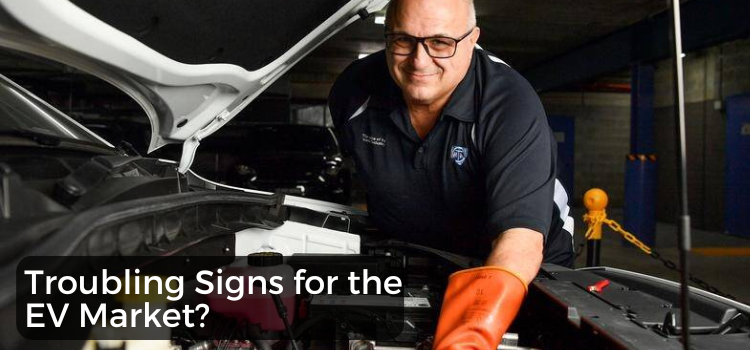Troubling Signs for the EV Market?

The EV sales frenzy seems to have cooled, with new car dealers that once were able to add dealer surcharges now discounting EVs as sales slowed.
Car makers, like GM have pivoted to include a product portfolio that includes hybrids. Mary Barra, CEO of GM, recently said “We have the (hybrid) technology… we’ll continue to look at where the market is, where the regulatory environment is.”
This slow-down of expansion in EV sales has already left a mark on the resale value of EVs. With an industry average depreciation rate over a five-year period currently at 38.8%, EVs fare much worse, losing as much as 49.1% of their value over five years Hybrids on the other hand, fare better than the industry average at 37.4%.
So, why the rapid depreciation for EVs? It seems that evolving technology, government incentives, and Tesla’s penchant for frequent price lowering are all having an impact. “There is absolutely an element of the rapid evolution of EVs that we are seeing right now that also makes EVs that are not particularly old start to look more obsolete more quickly than a traditional vehicle,” said Karl Brauer, executive analyst at iSeeCars.
EV depreciation rates also reflect government incentives that pull the price down immediately. A $7,500 government incentive for purchasing an EV makes a $50,000 EV instantly a $42,500 EV, and depreciation rates are based on the original MSRP price, not the price after any incentives or rebates. Tesla lowered prices of the Model 3 and Model Y a few times last year when faced with new competition from Mercedes, BMW, and even the Mustang Mach E, and the company recently announced it would again lower prices to shore up demand in 2024.
How might falling EV prices and faster depreciation impact the repair industry? EVs now account for almost 2% of U.S. auto claims last year, more than double the percentage in 2021, according to the latest data from Mitchell. The average repair severity for EVs is significantly higher at $6,018, compared to roughly $4,700 for internal combustion engine vehicles.
Faster falling market value with significantly higher repair cost, coupled with the small number of qualified repair shops will lead to more EVs being totaled rather than repaired, which is bad for both the insurer and the collision repair industry.
What does this mean for the future? The closest example of something like this happening in the past was about 20 years ago when large sedan sales fell when Americans shifted to SUVs. The value of the Caprice Classic and Crown Victoria fell, more of them were totaled and many found new life as rebuilt taxis and private vehicles in developing countries. Could this be the path for many of the totaled EVs?
Time will tell.
